Drive Danger Out - Information for Dutyholders
This page explains how you as a dutyholder can take the right steps to avoid accidents involving workplace transport.

Introduction
Every year, in Northern Ireland there are accidents involving workplace transport, some of which result in people being killed and many seriously injured. Pedestrians are knocked down, run over, or crushed against fixed parts by vehicles, plant and trailers. When getting on or off vehicles or loading or unloading in the workplace operatives have fell from vehicles and received serious injuries.
Your workplace transport risk assessment must consider all workplace transport activities:
- look carefully at how all the vehicles and people move round your workplace
- mark the traffic and pedestrian movements on a plan so you can see where pedestrians and vehicles interact
- identify improvements that will reduce the contact between pedestrians and vehicles
- remember to include all tasks
- make sure you consider delivery drivers and visitors as they are particularly vulnerable
More information can be found in the following leaflet which provides further information on creating a workplace transport risk assessment for separating vehicles and pedestrians in the workplace.
How should workplace transport be managed in the workplace?
To manage workplace transport effectively, there are three key areas your employer must consider when carrying out their risk assessment:
- safe site (design and activity)
- safe vehicle
- safe driver
Safe site
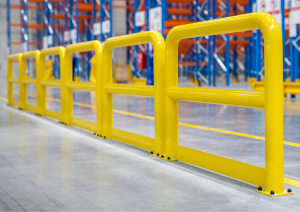

Every workplace must be safe for the people and vehicles using it. A well designed workplace that ensures vehicles and pedestrians are segregated will make transport accidents less likely.
If you don’t have the competence in-house when considering site design, ask for professional advice.
Traffic routes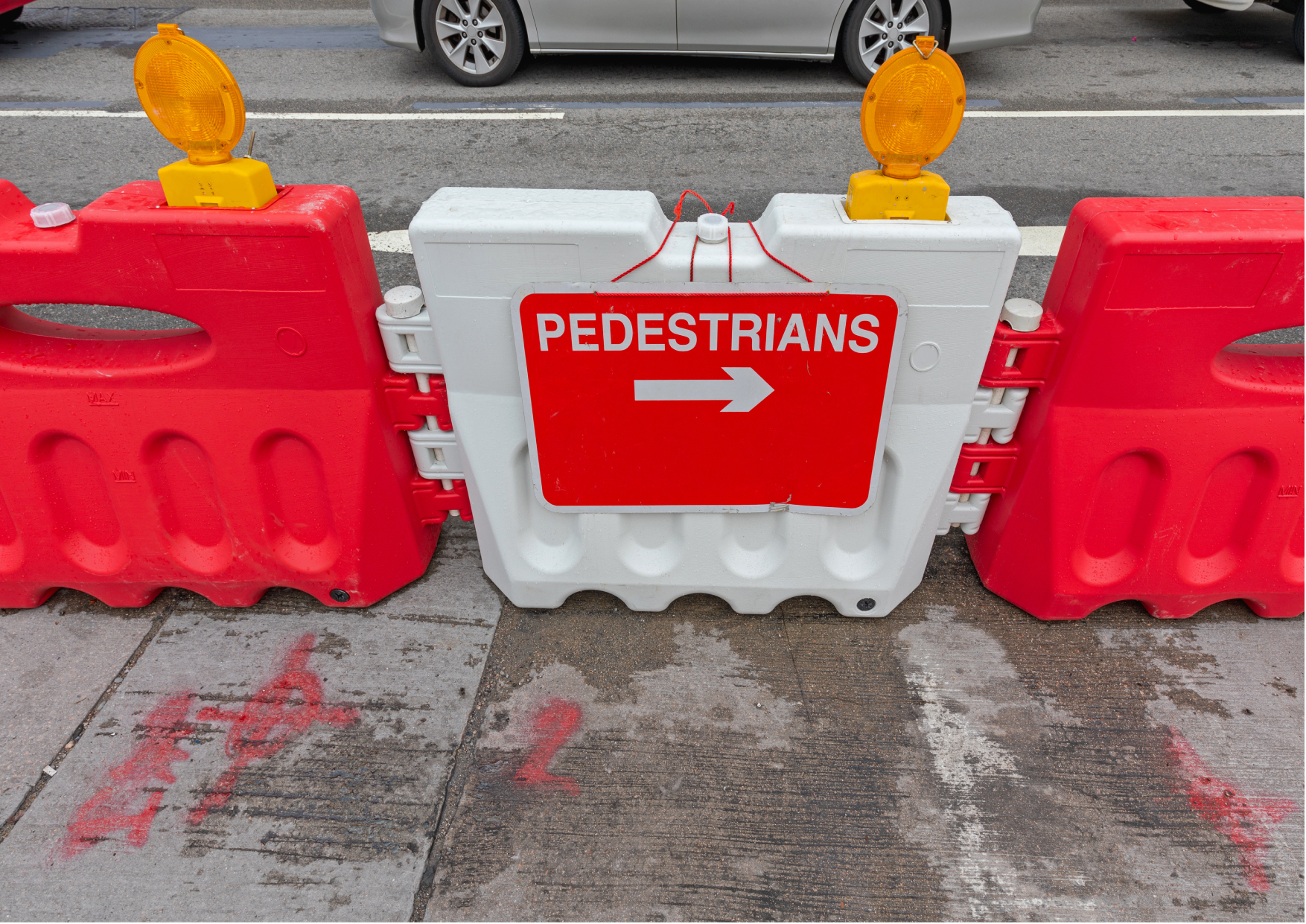
In the Workplace (Health, Safety and Welfare) Regulations 1992, a ‘traffic route’ is defined as ‘a route for pedestrian traffic, vehicles or both’. In the broader context of the Regulations, it also includes any stairs, staircase, fixed ladder, doorway, gateway, loading bay or ramp.
When planning workplace traffic routes, take account of the following requirements from the Regulations:
- plan your workplace so pedestrians are safe from vehicles
- provide a one-way system if you can
- provide separate routes for pedestrians and vehicles where possible
- avoid reversing where possible
- provide appropriate crossing points where pedestrians and traffic meet
- use 'Highway Code' signs to indicate vehicle routes, speed limits, pedestrian crossings etc.
- make sure lighting is adequate where people and vehicles are working
- keep road surfaces firm and even
- make sure there are safe areas for loading and unloading
- try to provide separate car parking for visitors as they may not know your site
Segregating pedestrians from vehicles, preferably by making routes entirely separate, is the most effective way of protecting them.
More information can be found in the following leaflet which provides further information on separating vehicles and pedestrians in the workplace.
One-way systems
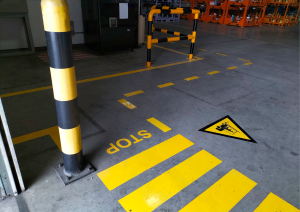

Provide one-way systems within your workplace. They are designed to limit reversing and prevent conflicting movements caused by ‘two-way’ traffic flow. They should work clockwise around a site, as this is the direction most drivers will expect, unless there are reasons why this would not be a safer option. They need to be clearly marked out using road markings and signs so that drivers can follow them easily. The advantages of oneway systems are:
- they help pedestrians know which direction vehicles are likely to be coming from
- they can be arranged to allow for good visibility around corners and at crossing points
- are easy to enforce
- are particularly useful where site access roads are narrow and visibility is poor
Pedestrian crossings
Where pedestrian and vehicle routes cross, provide appropriate, suitably marked and signposted crossing points for people to use, including dropped kerbs where the walkway is raised from the driving surface.
Lighting
Every workplace must have suitable and sufficient lighting. All traffic routes, manoeuvring areas and yards should be adequately lit, particularly near junctions, buildings, plant and pedestrian routes. Where vehicles move around when it is dark, ensure the site is adequately lit, without being a nuisance to people in the local area.
Site Visitors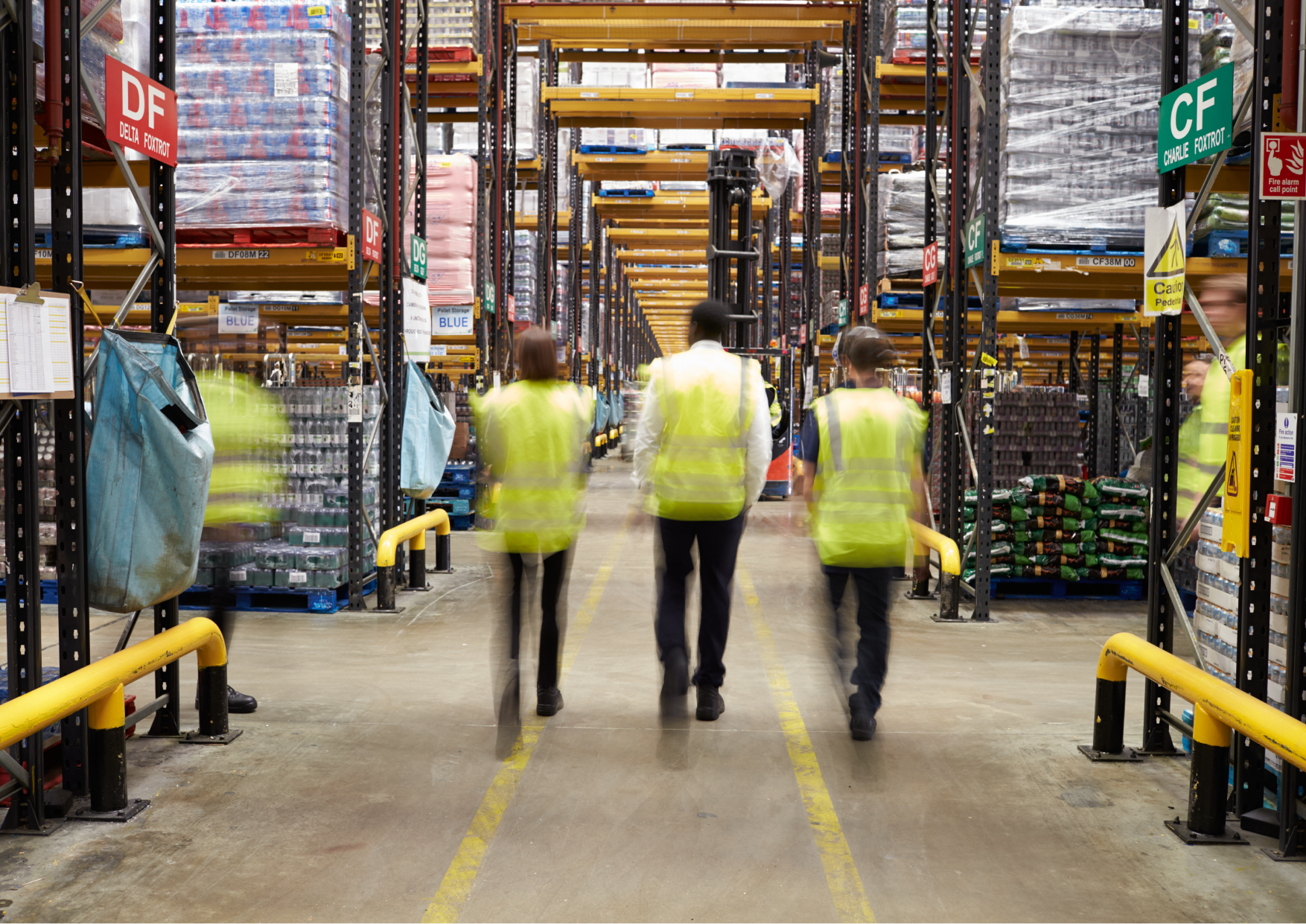
Visitors are unlikely to be familiar with the hazards of a workplace. When they have access to premises the routes they use should, where possible:
- always be accompanied by a company representative
- visiting drivers should report to the site operator for any relevant instructions such as the workplace layout, which route to follow, and where to park, load and unload
- kept separate from work activities
- segregated from vehicle traffic, eg a footway with a raised kerb or a separate path
- clear signage to direct visitors to and from car parks with safe access to the area they are visiting
Site visitors should not be allowed in a workplace transport operating area. If any piece of workplace transport should need to enter an area when site visitors have access, there should be a written procedure outlining the precautions (based on your risk assessment).
More information can be found in the following leaflet which provides further information on safe parking and manoeuvering in the workplace to keep pedestrians safe:
Speed
Limiting the speed of vehicles in the workplace is an important part of controlling traffic. The best way to do this is to use fixed traffic-calming measures such as speed humps, bollards, raised kerbs.
More information can be found in the following leaflet which provides further information on safe driving in the workplace:
Visibility
Visibility in the workplace needs to be good enough to allow drivers to see and avoid hazards. It is related to the speed that vehicles are travelling and affects the distance they need to avoid hazards by stopping or changing direction safely.
Loading and Unloading in the workplace


- when deliveries and collections are made, loading and unloading areas should be in a designated place, clear of passing traffic, pedestrians and other people who are not involved in loading or unloading
- clear of overhead power cables or pipework so there is no chance of fouling them, or of electricity jumping to ‘earth’ (arcing) through machinery, the load or people
- on firm, level ground, free from potholes and debris
- provide a safe area for drivers to wait that allows them to rest between driving shifts, especially if they may be waiting for several hours, with easy and safe access to toilet, washing and refreshment facilities and shelter in case of bad weather
Safe vehicle


Every employer by law must ensure the following:
- all work equipment (which includes vehicles) is suitable for its purpose
- take account of the working conditions
- assess the risks to the health and safety of using chosen work equipment
As an employer you must ask the following questions:
- will the driver have good all-round visibility?
- do I need to provide reversing aids such as CCTV where appropriate?
- what warning systems (such as horns, sounds and lights) are fitted?
- is there a way to prevent injury if the vehicle overturns? For example, roll protection, operator restraints or falling object protection?
- how will you maintain your vehicles particularly the braking system, steering, tyres, lights, mirrors and specific safety systems
- what safeguards will prevent people from coming into contact with dangerous parts of the vehicle such as power take-offs, chain drives, exposed hot exhaust pipes?
- is there a way to prevent the vehicle from moving? For example, by applying brakes and removing the keys?
- is the vehicle bright enough to be seen?
- can drivers access and egress the cab safely?
- do the vehicle lights provide enough light for the driver to carry out their duties
- do I need to provide additional ladders, non-slip walkways and guard rails where possible to reduce the risk of falls when climbing onto a vehicle?
- are the seat belts and restraints safe and comfortable and do they meet the needs of the job?
- what protection is there from bad weather, extremes of temperature, dirt, dust and fumes?
The design of vehicles used on public roads has to meet specific legal standards, set out in the Motor Vehicles (Construction and Use) Regulations (Northern Ireland) 1999. The overall standard of vehicles used in workplaces should be at least as good as for public roads. However, there are some specific supply standards dealing with mobile plant in the workplace such as lift trucks.
Further information on Rider-operated lift trucks can be found at the link below:
Make sure vehicles for driving and riding are safe to use in the workplace
As an employer you should make sure any vehicle used for your business is safe and remains safe.
Choose the right vehicle for your work
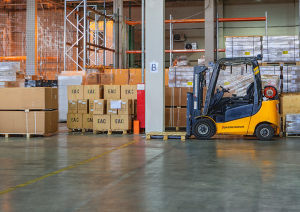

When you buy new vehicles, research which ones are most suitable for your operations.
Think about any issues you have with vehicles and speak to manufacturers about whether you can design those out.
Make sure your vehicles have driver aids and other safety devices where appropriate, for example reversing alarms, camera systems, proximity sensors or side protection bars for lorries or HGVs to protect cyclists. Assess the age and condition of the vehicle.
Certain vehicles are safer than others, particularly at different times of the day or year and in different conditions. Consider this when you plan and distribute work. For example, use cars rather than two-wheelers during bad weather.
If your company uses autonomous vehicles, you must plan how you use them. Drivers need to be competent to operate them, and aware of their role in the vehicle.
Managing vehicle safety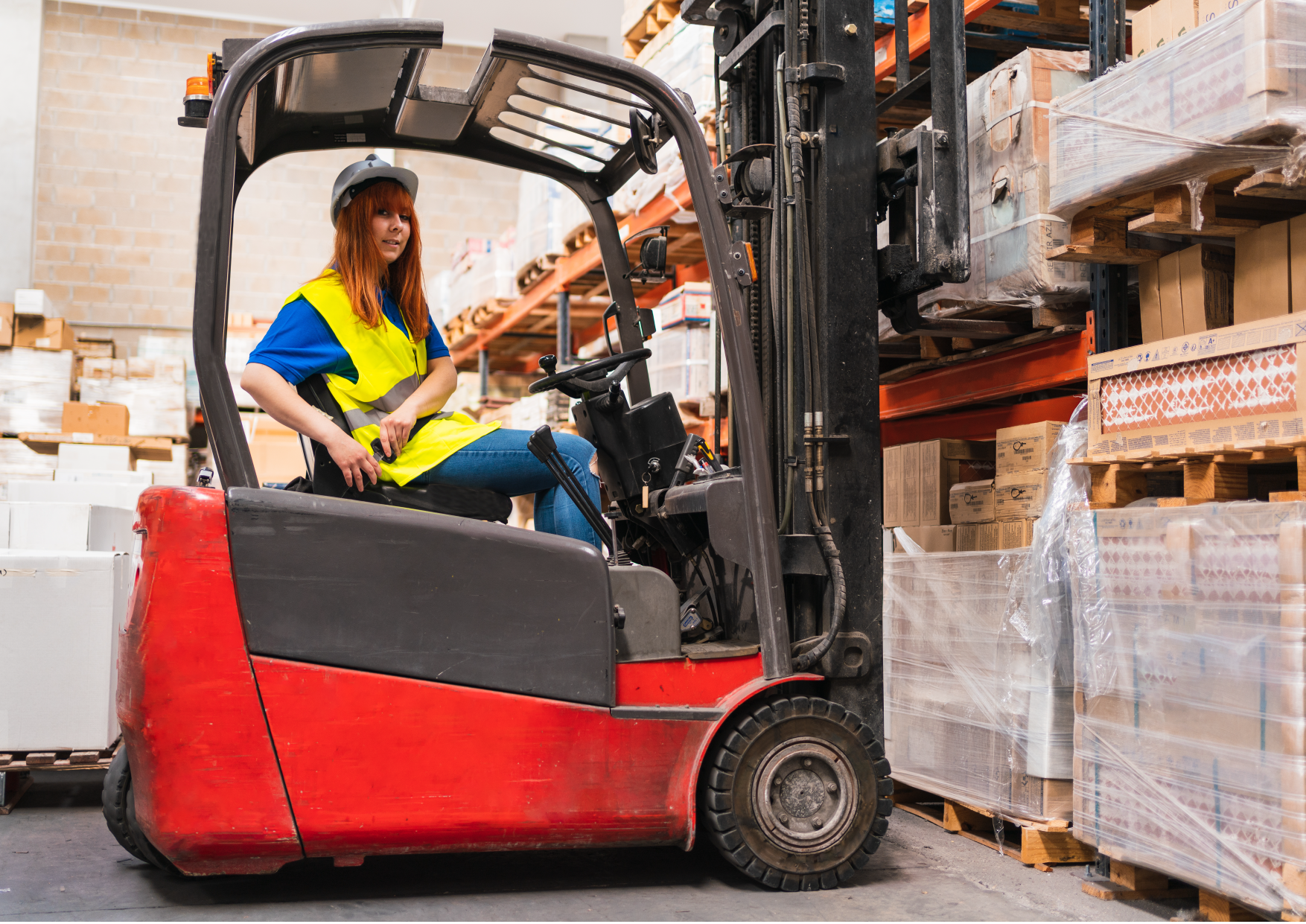
You should make sure that workers use vehicles safely. Make sure they:
- understand you have a clear policy that unsafe vehicles should not be driven
- use seatbelts when legally required
- do not overload vehicles - this is particularly important when using vans carrying a range of equipment or loads
- have appropriate arrangements in place for properly securing loads, such as goods and equipment
Make sure that privately owned vehicles used for work purposes are safe. Workers must do checks on their vehicles, have them serviced and have insurance and a valid MOT.
Maintain vehicles in a safe and fit condition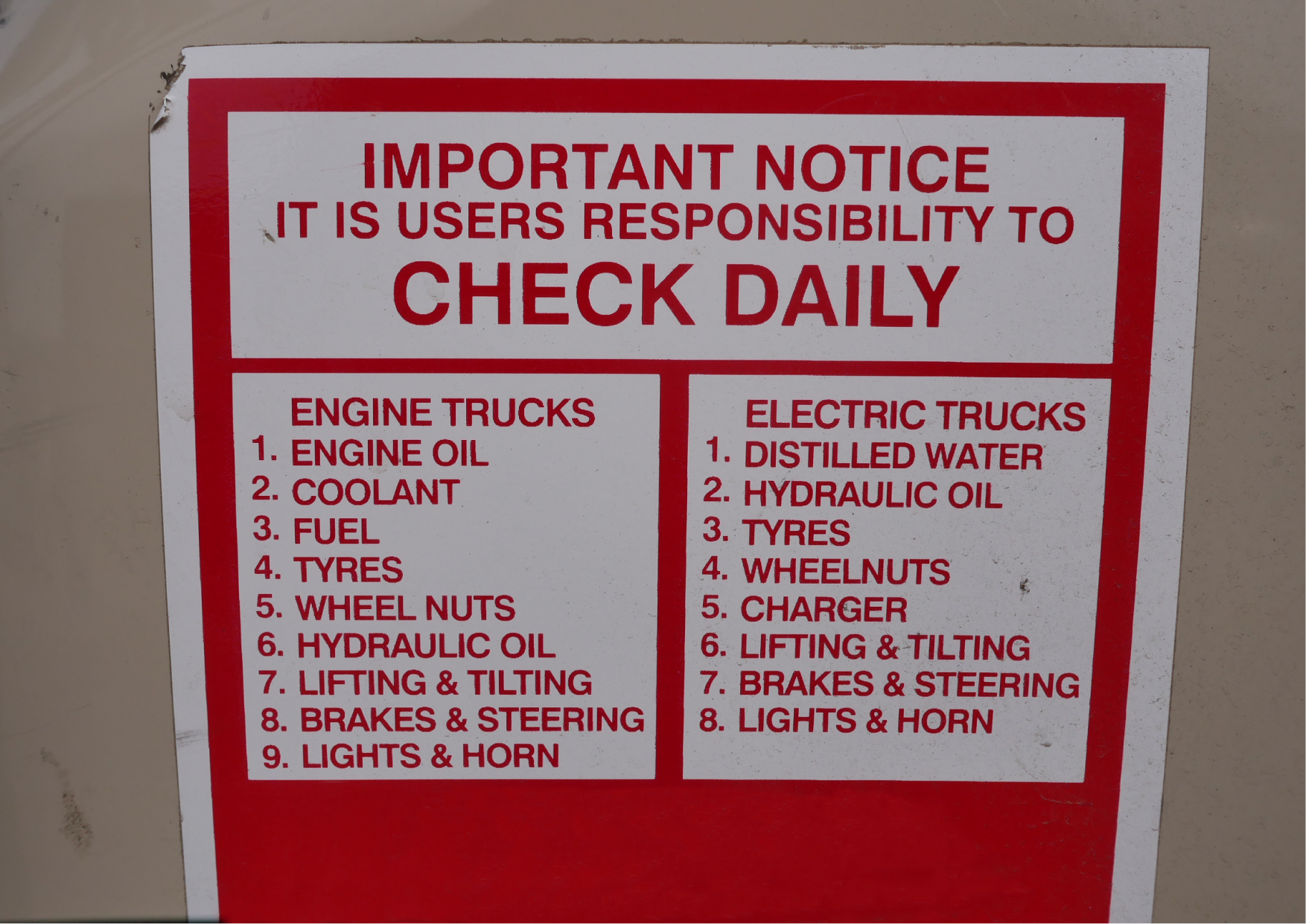
Make sure vehicles in your workplace are safe to go on the road, by ensuring:
- workers carry out and record daily vehicle checks and take any actions needed
- planned and preventive maintenance is carried out in accordance with manufacturers’ recommendations - an MOT certificate only covers basic defects and does not guarantee that a vehicle is safe
- drivers inspect tyres and windscreen wipers regularly and you replace them when needed
- you have procedures for reporting defects
- defects are remedied promptly and maintenance and repairs are carried out to an acceptable standard
- you have a clear policy that unsafe vehicles should not be driven
- headboards and bulkheads in vehicles and trailers are fitted to protect the driver and any passengers in the vehicle - they should be fit for purpose and checked regularly to make sure they haven’t been damaged
- your drivers are aware of hazards from electric and hybrid vehicles and what to do if involved in an incident on the road, for example the fire risks posed by battery damage in a collision
- drivers keep cabs tidy
Riders of two-wheelers
People are most likely to be killed or seriously injured on the roads while riding powered two-wheelers (including motorcycles, mopeds and scooters) or bicycles. They are also disproportionately likely to be involved in a collision which kills or seriously injures a person walking or cycling. So, these need a robust risk management approach when used on the road.
Consider the following for powered two-wheelers and bicycles:
- If you could use or encourage riders to use safer transport modes in bad weather, which presents a great risk to riders
- Make sure riders are adequately trained and have the skills to ride safely
- Assess loads workers are carrying and whether they destabilise the vehicle and are fastened securely
- Provide hands-free options for operating navigation systems and other apps required for work
- Provide job-specific personal protective clothing
Safe driver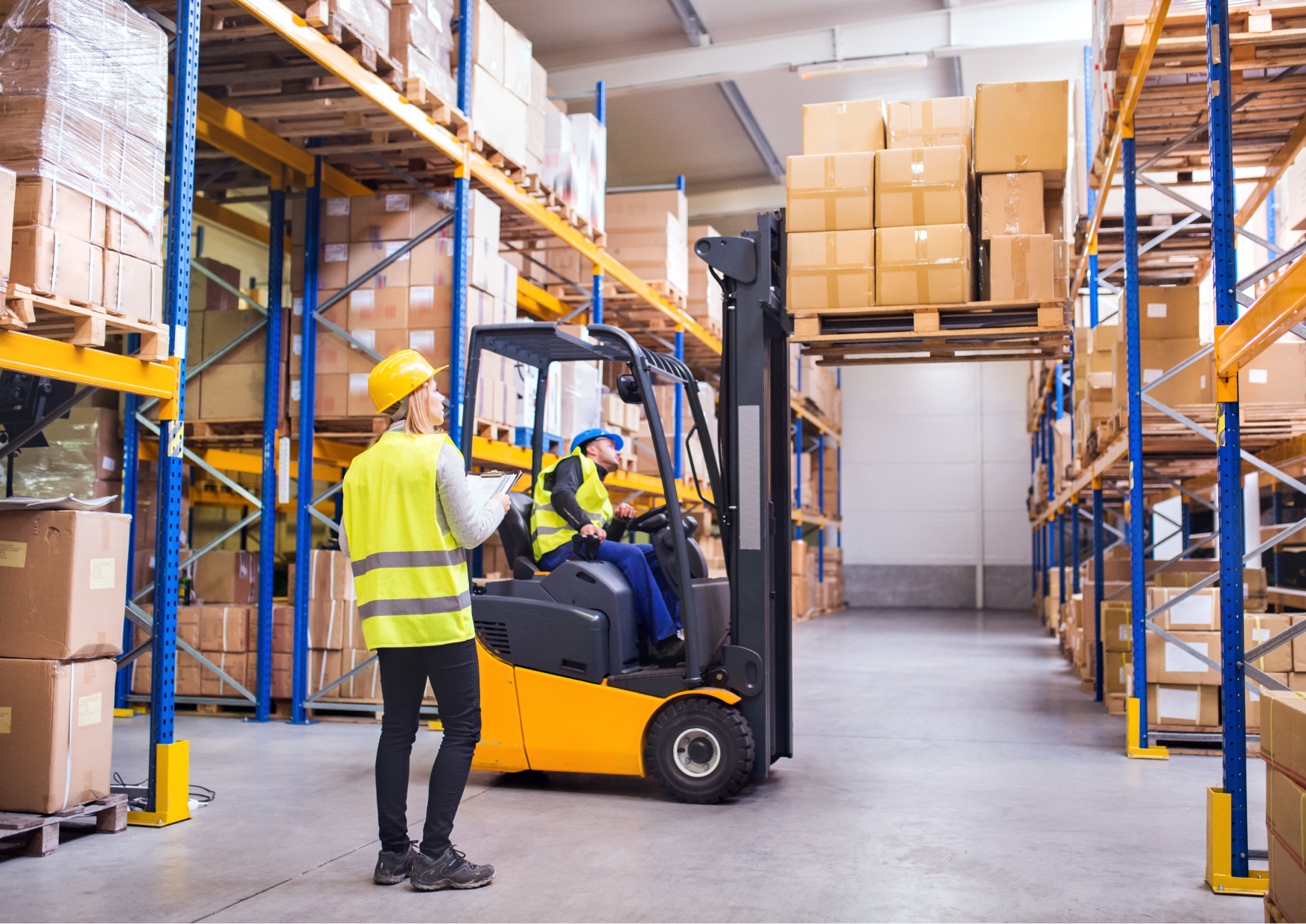
The law states you must take account of your employees health and safety capabilities when setting them tasks, ensuring they are adequately trained when they are recruited and exposed to new hazards in the workplace.
More information can be found in the following leaflet which provides further information on safe driving in the workplace:
Recruiting Drivers
Your procedures for recruitment, checking references, induction, training, supervision, auditing and assessing competence should ensure that workers are capable of operating the vehicles and attachments they use at work, in all of the environments in which they are used.
Drivers of vehicles in a workplace will often need many more skills than those normally required when driving on a road. Many workplace vehicles have very specialised attachments to do their jobs, and there are many other skills relating to tasks like loading, unloading, trimming and sheeting. Only trained and authorised drivers should be allowed to operate workplace vehicles.
More can be found in the following leaflets which provides further information on reversing and safe parking in the workplace.
Your drivers should:
- be fully able to operate the vehicle and related equipment safely
- have received comprehensive instruction and training so that they can work safely
- always adhere to your workplace speed limit and workplace transport risk assessment
- have a mature and responsible attitude
- understand the vehicle should only be operated as per manufacturers guidelines
- have a reasonable level of both physical and mental fitness - fitness should always be judged individually as some less physically able people develop skills to compensate
Where possible, match the requirements of a particular vehicle, task and situation with the levels of fitness and abilities of the driver.
Make sure drivers and riders are safe
You should make sure that your drivers and riders are safe and healthy when they are driving or riding for work (‘safe driver or rider’).
Competence and capabilities
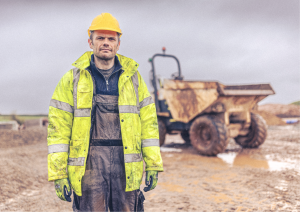

You must assess workers’ health and safety capabilities and competence.
Consider the following about your workers when doing your risk assessment, choosing workers or allocating work:
- experience, attitude, maturity, driving record, physical fitness, language barriers
- physical capabilities – ability, age, sensory impairment, mental health, and general health
- vulnerable workers, for example young workers, workers who are new to the job or new to the task, inexperienced or trainee drivers and riders
- the skill and expertise required to do the job safely and making sure they are met
- any driving or riding offences
- ensuring safe behaviours on the road
- ensuring licences, insurance, and MOTs are legal and up to date
It is important to make drivers and riders aware of company policy on work-related road safety. You could use:
- written instructions and guidance
- drivers’ handbooks
- training sessions
- induction
- group meetings including toolbox talks
Training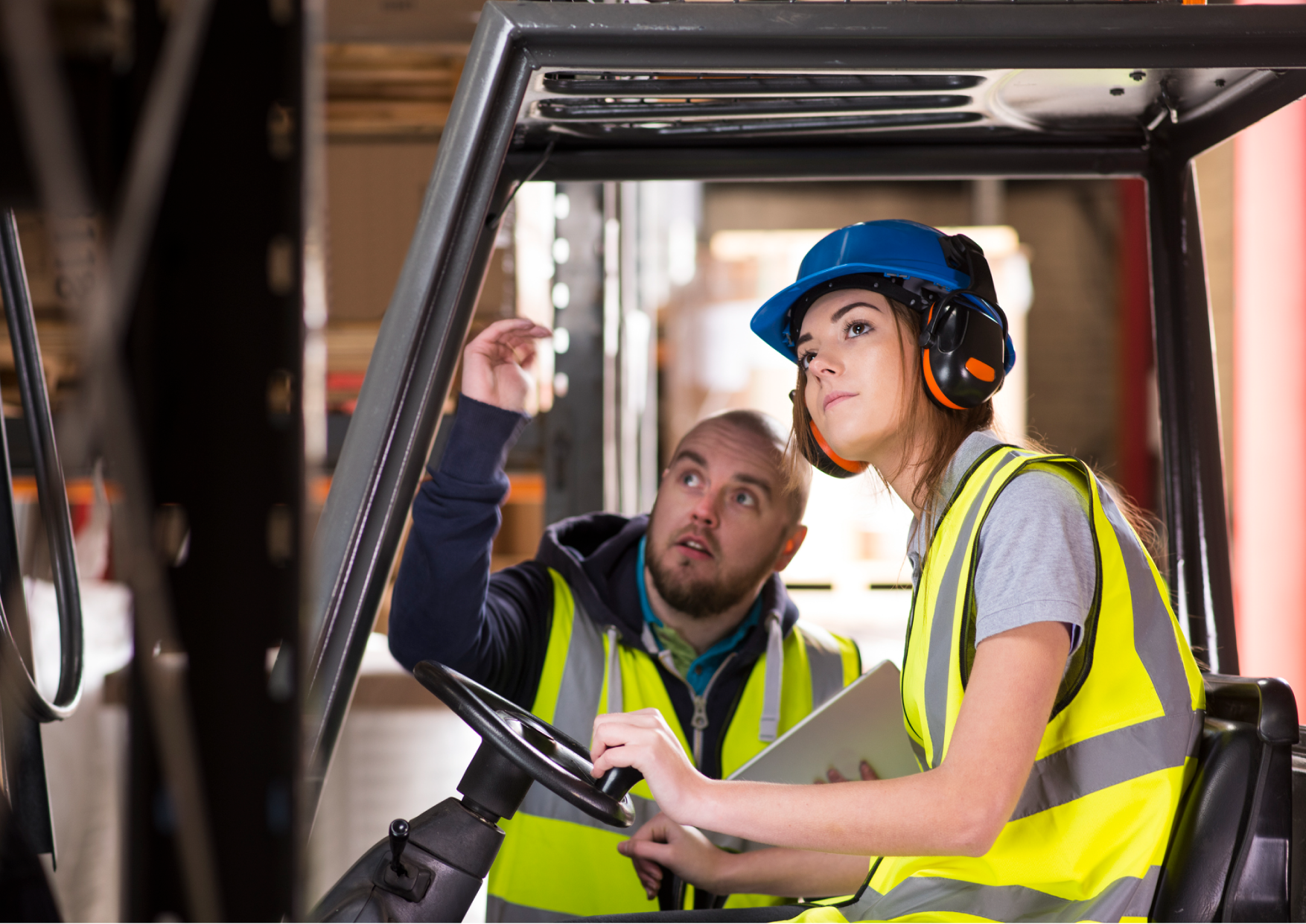
You must make sure workers are adequately trained at no cost to them. Consider:
- giving priority to those at highest risk, for example drivers or riders with high annual mileage, poor accident records, or vulnerable workers
- whether drivers and riders need extra training to carry out their duties safely, such as using defensive driving techniques, or how to load and unload safely
- whether drivers and riders understand how and when to use in-vehicle and additional technology
- training about other road users, for example cyclists, motorcyclists and pedestrians
- if drivers and riders need training on how to assess risks while they are on the road
- how to assess training needs periodically, including refresher training
- whether your workers need advanced driver training
- the benefits of your drivers and riders holding a full driving licence for powered two-wheelers
- how to ensure your training providers are competent
Induction training should cover issues like:
- violence, crime and assault – how to stay safe and how to report it
- incident and near miss reporting, as well as confidential health and safety reporting
- what personal protective equipment (PPE) should be worn, how to maintain it and when it needs to be replaced
- commitment to driving and riding within the law
- breaks and rest periods
- company policy on, for example working hours, safe use of multi-apping
- drivers and riders doing daily vehicle safety checks to make sure that their vehicle is safe to use - this is especially important for drivers and riders that travel long distances
- safety measures around the loading of vehicles (load security) and backpacks (especially on two wheelers)
- manual handling techniques
- safe use of mobile phones/apps
Instructions for drivers and riders on keeping safe
Give drivers and riders clear instructions on keeping safe. Make sure they understand how to:
- carry out routine safety checks, such as those on lights, tyres, and wheel fixings, and report any faults
- correctly adjust safety equipment, for example seat belts and head restraints
- ensure they are safe if their vehicle breaks down, for example to use safety warning triangles and high-visibility jackets
- act if the load in or on their vehicle moves during the journey, for example to pull over in a safe place as soon as possible, avoiding any harsh braking or steering, and contact you for advice
Also consider the following points:
- do not put drivers and riders under pressure to meet delivery targets, as this could encourage poor driving practices including speeding
- remind riders and drivers they must not drive under the influence of drink or drugs, including prescription drugs if they could affect the ability to drive or ride
- check whether drivers and riders are aware of the height of their vehicle, laden and empty - you may need to provide equipment so they can check the height before setting off
- check whether drivers and riders are aware of how to secure loads and ensure that their vehicle is not overloaded or unstable
- provide drivers and riders with guidance on other risks, for example slips and trips or falls from height
- make sure crash helmets and protective clothing for riders of two-wheelers are of the appropriate standard
Distractions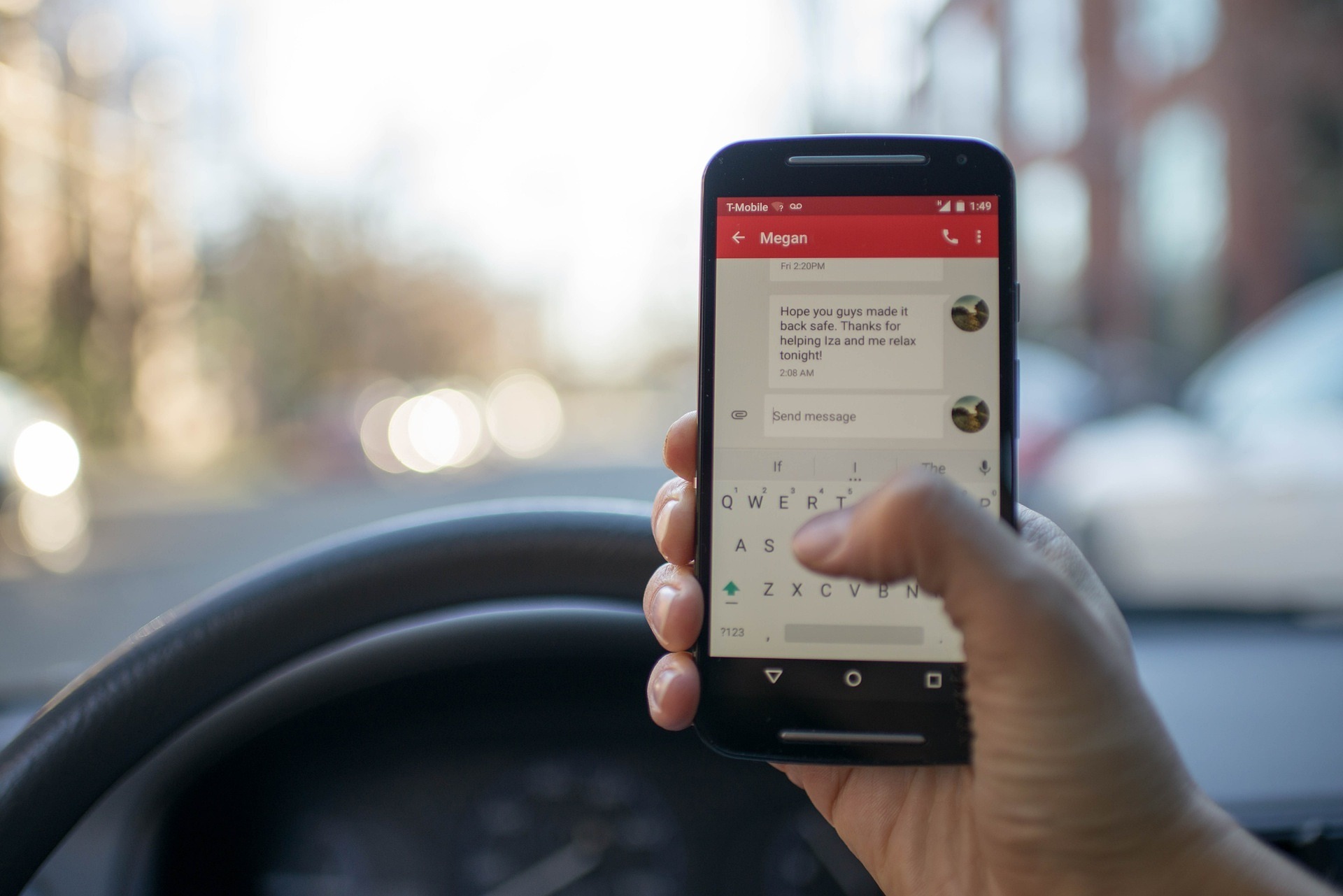
Distraction is when a driver or rider’s concentration is taken away from the task of driving. Reducing or removing these from drivers and riders will significantly reduce risk.
Distractions include personal digital assistants (PDAs), notifications, apps, mobile phones, other road users, personal circumstances, the radio, and passengers.
When it comes to mobile phones, make your drivers and riders aware that:
- using a handheld mobile phone while driving for calls, texting, web-browsing, taking photographs or videos is an offence
- using a hands-free mobile phone increases the likelihood of a collision
As an employer you should:
- have a clear policy on mobile phones – workers should not pick up phones or make or receive video calls while driving
- provide adequate hands-free equipment if they need to communicate while driving
- ensure drivers use hands-free mode sparingly and only when necessary
A self-employed driver or rider should ensure they comply with the law on not using hand-held mobile phones.
Violence and aggression
Assess the risk of violence and aggression towards drivers and riders and have policies and procedures in place to deal with it, including:
- training in how to deal with violence and aggression
- reporting systems
- systems for tracking drivers
- drivers regularly checking in
Health and safety responsibilities for contractors
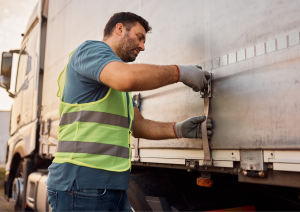

Both you and any contractor you use have duties under health and safety and road traffic law when vehicles are used on the road.
Think about:
- ensuring contractors are competent to do the job without risks to the health and safety of their workers and other road users
- providing contractors with information on the risks from your activities and the controls you have in place, for example company standards and policies (aims, commitments, guidelines, resource, responsibilities, dos, and don'ts) for vehicle and driver safety
- whether you have arrangements in place to ensure contractors tell you about risks from their work
- what arrangements you need to ensure co-operation and co-ordination to ensure everyone’s health and safety
- what you need to do to agree any controls before work starts and to monitor the ongoing work of contractors
- providing information and advice on long hours, fatigue and ill health
The leaflet 'Using contractors: A brief guide' gives guidance on your health and safety duties. Download a copy at the link below:
Telematics
Vehicle safety monitoring technology can help you monitor whether your drivers and riders are driving safely, for example not driving erratically.
For further information on this please go to HSE (GB) at the link below:
Resources
- Safe Driving in the workplace
- Safe parking in the workplace
- Separating pedestrains and vehicles in the workplace - a simple guide
- Reversing vehicles in the workplace
- Keeping pedestrians safe in the workplace
- Separating pedestrians and vehicles in the workplace - risk assessment
- Introduction to Workplace Transport
- Workplace Transport risk assessment
- Driving at work - an employer guide
- Workplace transport - safety information sheet
- Rider-operated lift trucks
- The safe use of telehandlers in construction - the Strategic Forum Plant Safety Group (www.highwayssafetyhub.com) - PDF format
- Compliance with ADR & Carriage of Dangerous Goods (CDG10) Regs (as amended)
- Quarry vehicle safety
- Inflation of quarry vehicle tyres
- Using tractors safely
- Overturning tractors and other self-propelled vehicles (hse.gov.uk)
- Quad bike safety
- HSG136 - A guide to workplace transport safety - HSE (GB) website
- HSG 144 - The safe use of vehicles on construction sites - pdf format (hse.gov.uk)
- Construction - Excavator industry health & safety (hse.gov.uk)
- Warehousing and storage: Keep it safe INDG412 (hse.gov.uk)
- Waste management and recycling - Transport (hse.gov.uk)
- Workplace transport- Ports and docks - HSE
- Agency and temporary workers
- Report of an accident at a level crossing
- Report of an accident not at a level crossing
- Report of an accident or a dangerous occurrence
- Reporting work-related road traffic incidents to HSENI
Key Legislation
- Health and Safety at Work (Northern Ireland) Order 1978 - legislation.gov.uk
- Workplace (Health, Safety and Welfare) Regulations (Northern Ireland) 1993 - legislation.gov.uk
- Lifting Operations and Lifting Equipment Regulations (Northern Ireland) 1999 - legislation.gov.uk
- Provision and Use of Work Equipment Regulations (Northern Ireland) 1999 - legislation.gov.uk